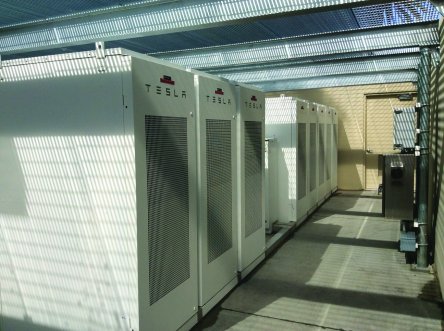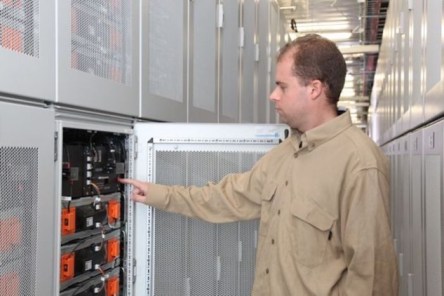Though energy storage is a relatively new addition to the property operations toolkit, it offers vast potential. Battery systems have demonstrated multiple ways to enhance sustainability, cut costs and supply reliability. A key tactic is load shifting, the process of obtaining power during off-peak hours and storing it for use during costlier peak hours, noted Elliotte Quinn, an energy and construction attorney with Charleston, S.C.-based law firm Parker Poe. Batteries offer an alternative backup strategy to diesel generators, and can store solar power for use at night or on overcast days, Quinn noted. Earlier this year, The Irvine Co. launched a multi-property storage strategy at 21 office towers in Orange County, Calif. When requested by local utility Southern California Edison, the buildings switch their power source from the grid to a storage system that’s powered by Tesla batteries (pictured above). The office portfolio becomes a “virtual power plant that can be used to take the load off the grid instantaneously,” explained Susan Kennedy, CEO of San Francisco-based Advanced Microgrid Solutions, the system’s designer and manager. Shifting to battery power reduces the load by 10 megawatts for as long as four hours to help SCE balance the grid. Wholesale Changes An order issued this year by the Federal Energy Regulatory Commission should make it easier for property owners to sell energy into the wholesale market, but there is a hitch. “If you do that, you’re making yourself subject to federal regulation,” said Quinn. Wholesale selling is likely to be the purview of larger owners, he predicted. As is generally the case with newer technology, battery storage remains a work in progress. By most estimates, costs are dropping, yet the difficulty of predicting payback periods presents a challenge for owners that need to make a multimillion-dollar...
Grid-Sized Storage
Energy Efficiency
Late last month, Southern California Edison switched on its newest substations, an 80MWh lithium-ion battery storage facility that will manage peak demand and improve grid reliability. Just off Interstate 15, nestled in the heart of California’s Riverside County, one of the world’s biggest energy storage projects recently roared to life. Part of a collaboration between Tesla and Southern California Edison (SCE), the installation at the Mira Loma substation will be used to manage peak energy demand and stabilize the grid. “Upon completion, this system will be the largest lithium-ion battery storage project in the world,” declares a Tesla blog post announcing the project. “When fully charged, this system will hold enough energy to power more than 2,500 households for a day or charge 1,000 Tesla vehicles.” Managing Peak Energy The Mira Loma project is one of the first to use Tesla’s new Powerpack 2 for utility-scale energy storage. With an 80 MWh capacity, the 400 Powerpacks will allow SCE to manage energy use during peak hours. The Powerpacks will be charged with electricity generated during off-peak hours and then supplement demand during periods of peak demand. This process will not only save energy; it will allow SCE to maintain grid reliability, deliver better power quality to customers and reduce dependence on fossil fuels. “The system will charge using electricity from the grid during off-peak hours and then deliver electricity during peak hours to help maintain the reliable operation of Southern California Edison’s electrical infrastructure which feeds more than 15 million residents,” explains the Tesla statement. “By doing so, the Tesla Powerpack system will reduce the need for electricity generated by natural gas and further the advancement of a resilient and modern grid.” Future Expansion Larger utility-scale energy storage projects are already in the works...


